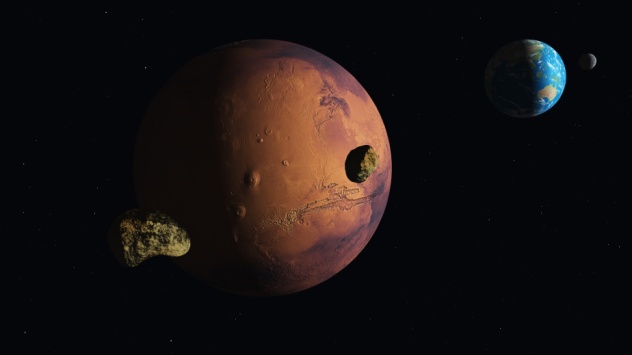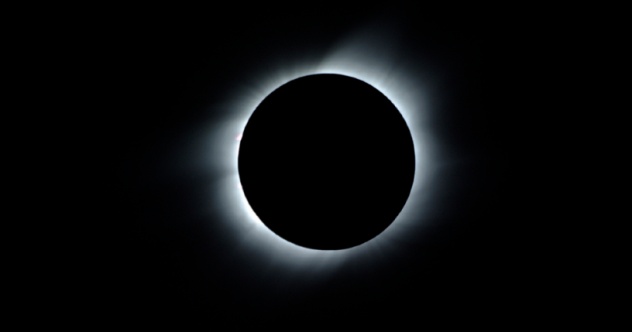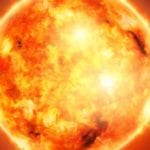 Weird Stuff
Weird Stuff  Weird Stuff
Weird Stuff  Movies and TV
Movies and TV Top 10 Ghost Adventures Episodes That Will Haunt You Forever
 Animals
Animals Ten Animals That Produce and Store Toxins in Unlikely Places
 Weird Stuff
Weird Stuff 10 Weird Things That Warp Your Sense of Time
 Miscellaneous
Miscellaneous Ten More Extremely Unexpected U.S. State “Firsts”
 Humans
Humans 10 Ideas That Scare People to Death
 Music
Music The Cursed Decade: 10 Classic Rock Stars Who Had Low Periods in the 1980s
 Health
Health 10 Crazy Ways Sleep Deprivation Can Affect You
 History
History 10 Enthralling Facts about the Field of Cloth of Gold
 Pop Culture
Pop Culture The Ten Greatest Engineers in Science Fiction History
 Weird Stuff
Weird Stuff 10 Surprising Things That Were Designed to Stop Evil Behavior
 Movies and TV
Movies and TV Top 10 Ghost Adventures Episodes That Will Haunt You Forever
 Animals
Animals Ten Animals That Produce and Store Toxins in Unlikely Places
Who's Behind Listverse?

Jamie Frater
Head Editor
Jamie founded Listverse due to an insatiable desire to share fascinating, obscure, and bizarre facts. He has been a guest speaker on numerous national radio and television stations and is a five time published author.
More About Us Weird Stuff
Weird Stuff 10 Weird Things That Warp Your Sense of Time
 Miscellaneous
Miscellaneous Ten More Extremely Unexpected U.S. State “Firsts”
 Humans
Humans 10 Ideas That Scare People to Death
 Music
Music The Cursed Decade: 10 Classic Rock Stars Who Had Low Periods in the 1980s
 Health
Health 10 Crazy Ways Sleep Deprivation Can Affect You
 History
History 10 Enthralling Facts about the Field of Cloth of Gold
 Pop Culture
Pop Culture The Ten Greatest Engineers in Science Fiction History
10 ‘What-If’ Scenarios About Our Solar System
We live on a small, green planet with a single moon, orbiting a yellow star with a few less inviting rocky neighbors nearby and more distant neighbors of greater size and gaseousness, which we’ve named after various mythological deities. As we search the more distant regions of space, we are desperately trying to find other stellar systems that might harbor similarly pleasant worlds for life to develop. Appreciating this endeavor and understanding how lucky we are to live in the system that we do can be greatly assisted by exploring various hypothetical and wild scenarios about how our solar system could be very, very different.
10 Mars Never Lost Its Magnetic Field
Mars once had a promising atmosphere that was warm, wet, and dominated by carbon dioxide, which was destroyed when the red planet lost its magnetic field around 3.6 billion years ago, allowing the Sun’s punishing solar winds to strip away the atmosphere. This happened relatively quickly in cosmic terms, with most of the atmosphere lost within a few hundred million years of the magnetic field shutting down. Today, the Martian atmosphere is about 1 percent of Earth’s at sea level, and solar winds continue to eat it away at a rate of about 100 grams per second.
We know there was once a magnetic field around the planet, as some magnetized rocks still exist on the surface. Some believe that the loss was caused by heavy asteroid bombardment, disrupting the heat flow within Mars that generated the magnetic field. If that hadn’t happened, then Mars could have retained its primitive oceans and perhaps been another source of life in our solar system.
However, another theory suggests that the old magnetic field may have only ever covered half of the planet, meaning it wouldn’t have had long-term viability, anyway. Understanding the composition of the Martian inner core is key to this question. On Earth, liquid iron flows around a hotter, more solid core, keeping our protective magnetic field in place. If Mars only has a molten core, this would help explain the loss.
Software engineer Kevin Gill made an admittedly nonscientific attempt to model a habitable Mars using NASA data and its Blue Marble: Next Generation images. Gill said he played it somewhat by ear on the details:
I didn’t see much green taking hold within the area of Olympus Mons and the surrounding volcanoes, both due to the volcanic activity and the proximity to the equator (thus a more tropical climate). For these desert-like areas I mostly used textures taken from the Sahara in Africa and some of Australia. Likewise, as the terrain gets higher or lower in latitude I added darker flora along with tundra and glacial ice. These northern and southern areas textures are largely taken from around northern Russia. Tropical and subtropical greens were based on the rainforests of South America and Africa.
9 Earth Has No Moon
Around 4.5 billion years ago, it’s believed that a Mars-sized planetary embryo (called Theia) crashed into Earth, sloughing off enough matter to allow for the creation of our moon. The Moon’s tidal effects may have affected early volcanism and increased the number of meteor impacts, which would have been devastating for early life. However, some believe that life developed first around deep-ocean hydrothermal vents, a process which would have been positively affected by tidal flows.
Fast lunar tides when the Moon was much closer to the Earth may have created shallow saline seas where protonucleic acid fragments would molecularly bond at low tide and then dissociate at high tide, eventually giving rise to DNA. According to paleobiologist Bruce Lieberman, “I suspect that eventually life would have made land without the tides. But the lineages that ultimately gave rise to humans were at first intertidal.”
It is likely that the tidal flows helped transport heat from the equator to the poles, meaning that without the Moon, ice age events would have been less severe, which would have reduced evolutionary pressures on life. If life evolved on an Earth lacking a moon, it likely would have shown much less change over time and much less diversity. The length of the day would also be different without the Moon, which helped to slow the early Earth’s rotation from a stingy six hours to a generous 24 hours, as well as to stabilize the Earth’s tilt and therefore its seasons. Any life developing on a moonless world would have to deal with extremely short days and nights and probably large climatic shifts as well.
Lacking the Moon, life-forms would miss the benefit of using moonlight to remain active at night, which could change levels of nocturnal activity and the success of nighttime predation or simply encourage the evolution of eyes able to work by the light of the Milky Way alone. Any intelligent life that developed would lack the cultural influence of the Moon and the handiness of the lunar calendars commonly used by early civilization.
8 Earth’s Rings
After the collision with the erratic planet Theia, the Earth actually temporally had rings, which eventually coalesced into the Moon. This happened because the wreckage lay outside the Earth’s Roche limit, in which gravitational forces tear apart any budding natural satellite. If a small moon or satellite orbiting the Earth had wandered too close to the Earth’s gravitational pull, it could have been pulled apart, creating a sustained ring.
Saturn has rings of ice, which wouldn’t last long as close as we are to the Sun, but theoretically, rings made of rock could survive, though they would appear very different from Saturn’s rings. The effect on the development of life on Earth would be pronounced, as the shadows of the rings would cause colder winters and reduced sunlight in both hemispheres. If intelligent life developed, it would find the rings an impediment to ground-based optical astronomy. Rings would also make spaceflight and artificial satellites a much more difficult proposition, what with all the space debris.
These rings would appear differently depending on the region of the Earth from which they were viewed—a thin line across the sky in Peru, a mighty arc dominating the sky in Guatemala, a 180-degree atmospheric day clock thanks to the Earth’s shadow in Polynesia, and an ever-present glow on the horizon in Alaska. We can only speculate on how the ancient peoples of the world would have incorporated such stunning vistas into their mythologies and cosmologies.
7 Jupiter Star
The largest planet in our solar system is considered by some to be almost, but not quite, large enough to have developed into a brown dwarf star. (Others say that to get that far, you’d need mass equal to 13 Jupiters.) This would have been a dim and distant star slightly brighter than Venus. It wouldn’t produce much light or heat and would lie five times the distance between the Earth and the Sun, so it may not have affected the development of life on Earth. This is fortunate.
Jupiter becoming a star wouldn’t be easy or as simple as setting the planet on fire, as fun as that sounds. As Jupiter is mostly hydrogen, you’d need to surround it with about half a Jupiter’s worth of oxygen to ignite it, which would create water. But that would be a big fireball, not a star. To get the nuclear fusion that powers the Sun, you’d need much more hydrogen. That would be 13 Jupiters’ worth for a brown dwarf, 79 extra Jupiters for a red dwarf star, and about 1,000 more Jupiters to get another star the size of the Sun.
However, one blogger used the solar system simulation program Sandbox Universe to increase the size of Jupiter to that of the Sun, causing chaos in the solar system. The moons of the outer planets were sent flying off their orbits in all directions, and the asteroid belt was completely destroyed. While Mercury and Venus remained relatively unchanged, the Earth usually ended up crashing into another planet or ending up in a scorching new orbit close to the Sun.
6 Earth Reverses Spin

The most obvious effect of the Earth’s spin being reversed would be the Sun rising in the west and setting in the east, but this would be quite the challenge. According to Penn State astrophysicist Kevin Luhman, “The Earth spins the way it does because it was basically born that way. [ . . . ] When the sun was a newborn baby star, it had a whole bunch of gas and dust circling around it in a big disc-like structure.” The only planet which spins in the opposite direction is Venus, probably due to a collision billions of years ago. Repeating that process on Earth would likely remove any observers to the long-term effects.
But assuming it was magic or aliens, there would still be serious consequences. It would completely interfere with the Coriolis effect, which dictates how the spin of the Earth translates into wind patterns. This would reverse trade winds and change climates in many regions. Europe in particular would be seriously affected, with the balmy warming winds blowing across the Atlantic from the Gulf of Mexico disappearing, only to be replaced by a Siberian chill blowing in from the East.
According to some studies, while things become unpleasant in Europe, the results of a reverse-spinning Earth is positive in some places. North African rainfall would go up, and the amount of river water entering the Mediterranean could almost turn it into a freshwater lake. Warm air would instead be pushed up into the northern Pacific and the southern Atlantic, making Alaska, Far Eastern Russia, and parts of Antarctica much more inviting places to live.
5 Changing Places With Mars

Swapping Earth and Mars around would have some pretty serious effects: Martian temperatures would rise, melting the polar caps, freeing gases from the soil, and creating a climate almost as warm as what we have on Earth now. Earth, on the other hand, would quickly get colder and freeze over. A potentially larger problem might be destabilization of the inner solar system caused by the effect that the planets have on each others’ orbits.
Planetary physicist Renu Malhotra of the University of Arizona ran a simulation that showed major destabilization in planetary orbits. She tried to ignore the results for Mercury, but that ended up causing Mars to be ejected from the solar system. Another simulation saw Earth and Mars both having majorly destabilized orbits, due to the influence of Jupiter in the former and that of Earth and Venus for the latter, while Mercury’s orbit is wildly affected. This suggests that the orbital situation of the inner solar system is rather precarious, which is a pity for some far-seeing futurist proposals about towing Mars closer to the Sun in 100,000 years or so.
Interestingly, if the orbital mechanics could be worked out, Earth might actually do all right being swapped with Venus. One study used computer simulations to prove that the Earth or an Earth-like planet might potentially be habitable at Venus’s orbit, usually considered slightly too close to the Sun for the habitable zone. Despite receiving twice the amount of radiation, the cloud cover kept the surface temperature from rising too high for life to develop. Venus may have rotated faster earlier in its history, causing the greenhouse effect to run amok and its oceans to boil away.
4 Life At The Galactic Center And Edge

We apparently live in a pretty dull sector of the Milky Way, way out of the boondocks of Orion’s army far from the hustle and bustle of the galactic center. If we were at the center of the galaxy, the night sky would be significantly brighter, with a large number of stars shining as bright as Venus in the night sky, as stars near the core are separated by distances of only a few light-weeks rather than light-years. The density of stars near the center is around 10 million stars per cubic parsec, compared to 0.2 in our benighted sector. There is also a fairly higher number of supernovae and the presence of a supermassive black hole, but that’s urban living for you.
Meanwhile, if we were closer to the edge of the Milky Way, things wouldn’t be too different, if life arose at all. Star systems at the edges of galaxies have a lower level of metallicity, meaning that there are smaller amounts of elements that are heavier than hydrogen and helium. With around a third of these heavier elements available in galactic rim worlds, rocky, Earth-like planets could emerge. However, the reduced metallic elements would mean that gas giants like Jupiter, which slowly accrete around rocky cores, would be less likely to form. Without gas giants to absorb the blow, rocky worlds are more vulnerable to impacts from comets but may also be less likely to have water-bearing asteroids pitched in their direction. At any rate, Earth on the edge would likely have a lonelier sky with fewer wandering bodies to spur the imagination of astronomers and stargazers.
There might be a positive side to Earth’s position in the galaxy’s outer suburbs. Some believe that conditions for life rest on a number of very key conditions, and it is only within a relatively thin range known as the Galactic Habitable Zone that these can really pan out. In 2001, Guillermo Gonzalez argued that the frequent supernovae and high levels of radiation present in the galactic center would make it difficult for life to emerge there unscathed. More recent research suggests that argument might be overly skeptical, as the frequent supernova sterilizations would be balanced out by the more frequent chances for the emergence of life. One team even suggested that 2.7 percent of stars in the inner galaxy could have habitable worlds.
3 Two Suns
In 2011, astronomers observed the first known planet within a twin star system, also known as a circumbinary planet, called Kepler-16b. Alan Boss, astrophysicist at the Carnegie Institution for Science, was asked how Earth would fare under such conditions. He said, “It’s a little frosty. [ . . . ] Though it is closer to its stars than Earth is to the sun, the stars aren’t quite so bright, so the temperature of this planet would only be about 200 Kelvin. If you replaced our sun with those stars, we would be even colder than 200 Kelvin, because we’re farther out than this Tatooine-like planet.”
Of course, not all binary systems are the same, and some situations might be significantly better off for the development of life. Research presented at the 223rd American Astronomical Society in 2014 suggests that some binary star systems might be more favorable for the development of life than unitary star systems. Paired stars whose spins were synchronized would reduce each other’s solar radiation and stellar winds, which can strip planets and moons of their atmosphere if they are too strong.
Research by astrophysicist Paul Mason suggests that stars orbiting each other between 10 and 60 Earth-days would exert tidal forces on each other to slow their spin and reduce stellar winds, while also potentially extending the range of the system’s habitable zone thanks to the combination of light from two stars instead of one. Mason speculated that if we had two suns, Venus might have retained its water, while Earth could also be a significantly wetter world. NASA believes that at least one of the known planets in the Kepler-47 binary system lies within a habitable zone.
2 The Sun Goes Out

Despite the fears of the ancient Mesoamericans, the Sun is not under any threat of suddenly going out, and such a scenario is physically impossible as far as we can tell. But if it did, the Earth would not instantly freeze. Assuming we remained in orbit around the now cold, dead cinder that was our once-loving star, the temperature would drop below – 17 degrees Celsius (0 °F) within a week, and then – 73 degrees Celsius (–100 °F) within a year. Without photosynthesis, plant life would die quickly, as would all surface life as the surfaces of the seas froze solid.
These top layers of ice would insulate the deeper waters and prevent the oceans from actually freezing for another few hundred thousand years, so some oceanic and geothermal life forms may survive. Weirdly, trees would hang on for a few decades thanks to slow metabolisms and sugar stores. The best places for humans to survive would be in nuclear submarines or perhaps habitats built in countries like Iceland with rich stores of geothermal energy.
Other than death by freezing, XKCD suggested some advantages to a Sunless world. There would be a reduced risk of solar flares, improved satellite communication, and better circumstances for astronomy. It would also reduce the trade costs of time zones, prevent sneezing-related mishaps for fighter pilots, and eliminate the chemical burns caused by the combination of chemicals found in parsnips (called furocoumarins) on human skin being exposed to sunlight.
In general, it appears that it would be better to keep the Sun around. Gizmodo speculated on the results of the Sun ceasing to exist entirely for a single second. Without the Sun’s gravity, all the objects in the solar system would go from circular orbits to traveling in a straight line. A second later, when the Sun was back online, everything from the gas giants to space dust would be in new orbits, some of which might be unstable and lead to things getting ejected from the solar system. It would also remove the heliosheath that protects the solar system from extrasolar radiation. A second with the shields down might let in a fair bit of nasty radiation from outside, which could lead to a pretty global aurora, disturb satellites and electricity grids, or possibly sterilize the Earth.
1 Earth Meets Black Hole
Almost every child with an interest in the universe has considered the effects that a black hole would have upon the Earth, or at least certain people living on it. Frank Heile from Stanford University has speculated on what would happen if a black hole the size of a coin, which would have approximately the same mass as the Earth, was placed at the center of the planet. It wouldn’t be as simple as the Earth getting hoovered into a cosmic maw, but it would be messy.
Matter falling into the black hole would become extremely hot, causing radiation and pressure to push out the outer layers of matter and cause a spectacular explosion, blowing much of the Earth away as superheated plasma. Conservation of angular momentum would dictate that the mass of the Earth would start to rotate faster around the black hole and create an accretion disc that would restrict the speed in which the black hole could consume the mass of the Earth. The Earth would be a rapidly rotating ruin, but it would take some time to be consumed.
A smaller black hole wouldn’t be so bad. Primordial black holes (PBHs) are believed to be prevalent throughout the universe, with the mass equivalent to a small mountain. These PBHs are theorized to be lurking inside certain gas giants and might cause premature supernova in stars. If one hit the Earth at high speed, it might just pass straight through. According to Russian and Swiss research, such a collision would release energy equal to the detonation of a ton of TNT, but this would be spread across its entire trip through the Earth, so you might be lucky to see the spark as it hit the ground. It would, however, leave behind “a long tube of heavily radiative damaged material, which should stay recognizable for geological time.”
Things would be even grimmer if the solar system was approached by a supermassive black hole with around one million times the mass of the Sun, perhaps ejected by the gravity of two colliding galaxies. According to astronomer Christopher Springob, we would realize something was amiss when the black hole came within 1,000 light-years of our solar system and we started to notice other stars being disrupted. Then, we might only have a few hundred thousand years to prepare for its arrival within a few hundred light-years, when the black hole would disrupt the orbits of the planets and potentially send us spinning out of the solar system to freeze, or diving into the Sun to charbroil. By the time it was within a light-year, its gravity would rip the world apart, so the Earth would be well-chewed before it was finally swallowed.
Or not. Ohio State University’s Samir Mathur believes that he has mathematical proof that we might not even notice getting sucked up by a black hole. He is a proponent of fuzzball theory, stating that black holes are probably tangled balls of cosmic string that create near-perfect holograms of anything touching their surface. Some believe that fuzzball black holes are still surrounded by a highly destructive “firewall,” but Mathur believes that if the universe is a hologram as string theory suggests, then black holes might just be mostly harmless copying machines.
David Tormsen was born of Nibiru. Email him at [email protected].








